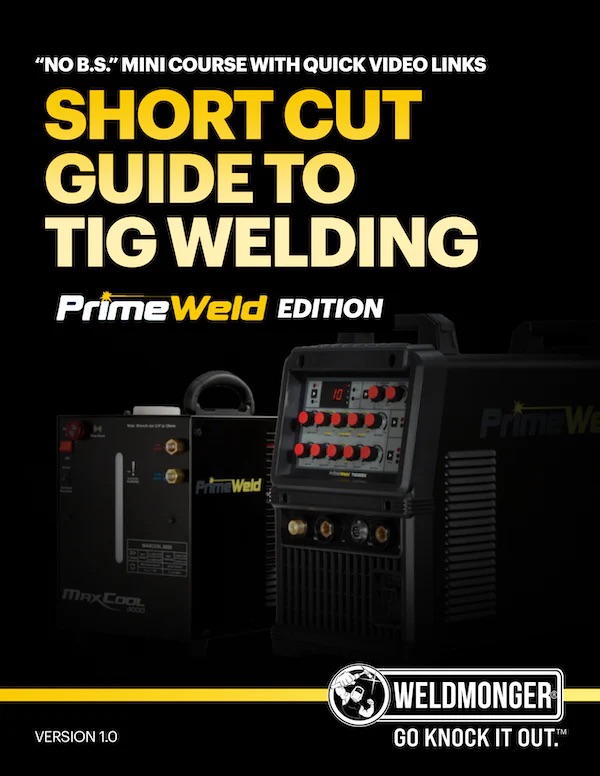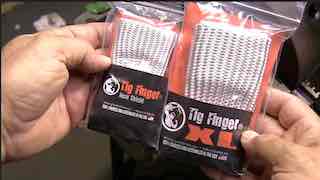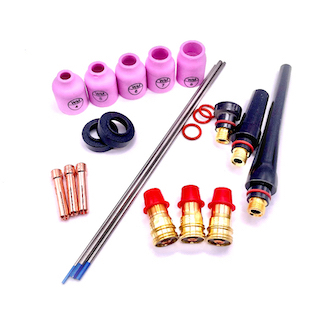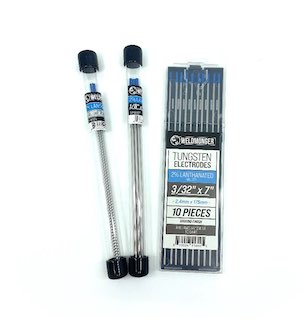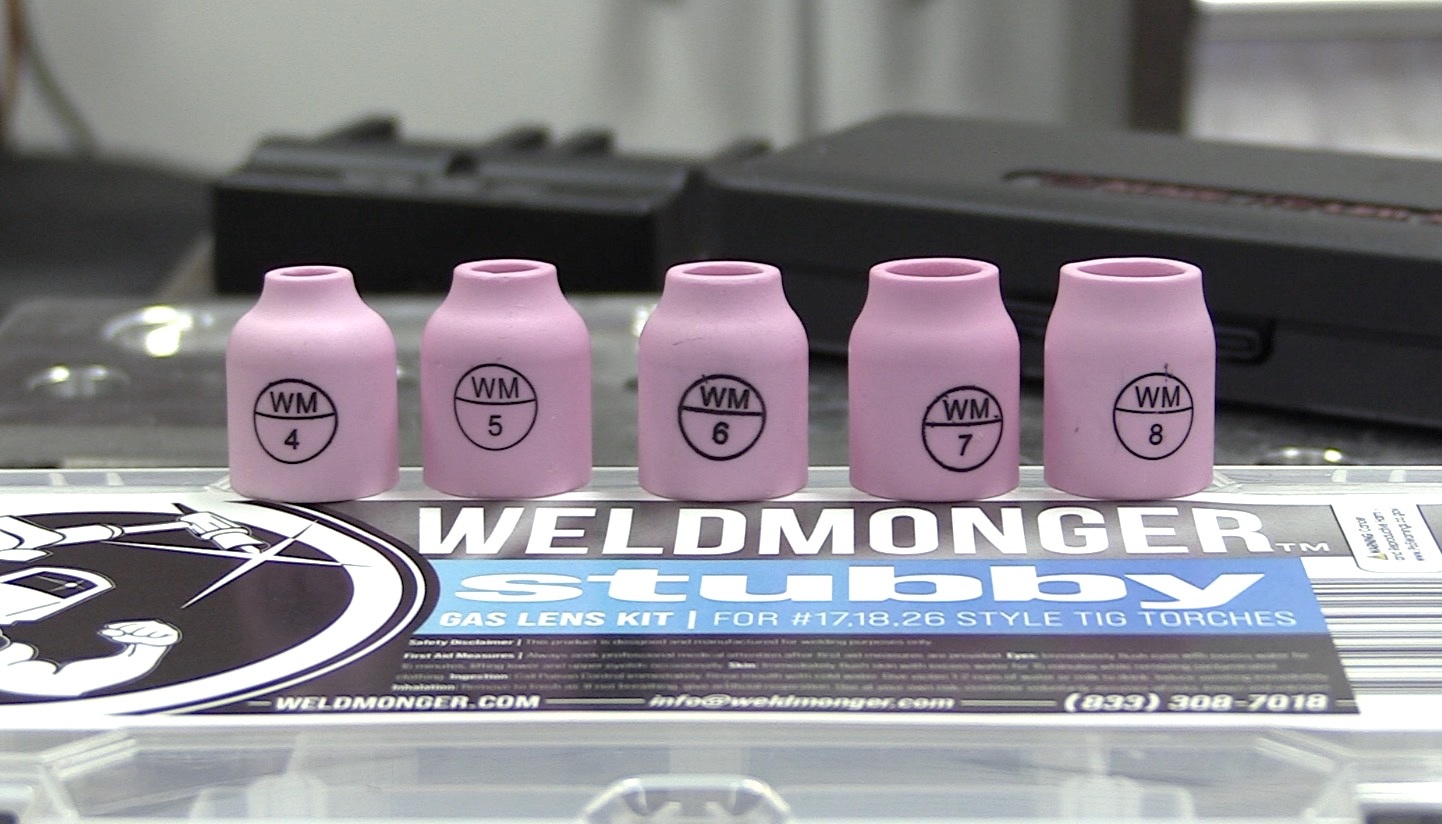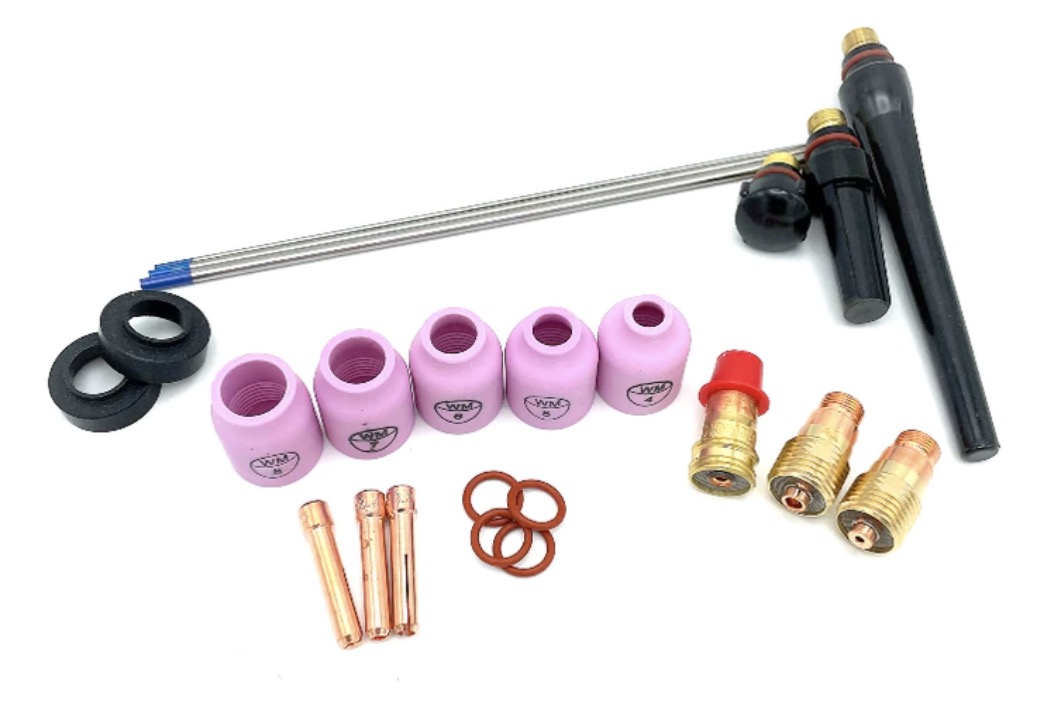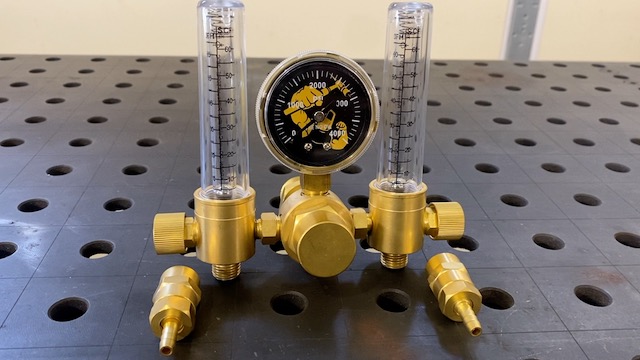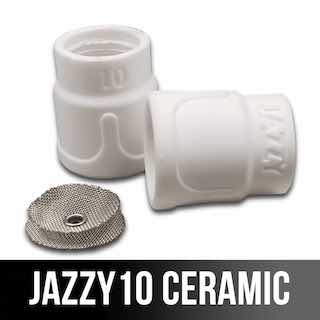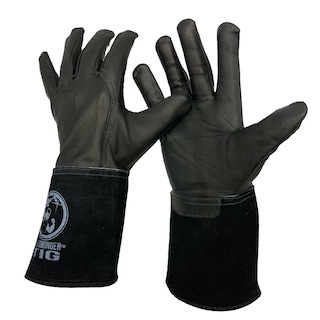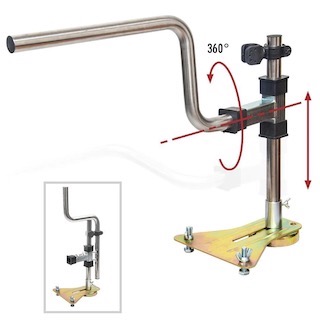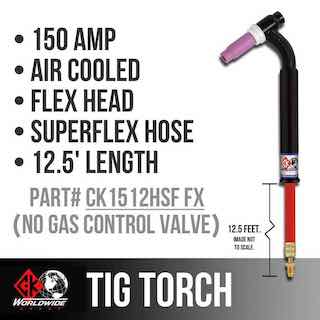How to Weld - TIG Welding - GTAW - Gas tungsten Arc Welding
I. Introduction to TIG Welding
I made this workbook to help you get started TIG welding and its Free. Just click on the image below
A. Definition and Overview
The acronym TIG stands for Tungsten Inert Gas.
Before it was TIG it was Heliarc and some old timers still call it heliarc.
But the proper term is gas tungsten arc welding (GTAW)
More people call it TIG than the proper name and TIG is easier to say in conversation.
But you might see GTAW or gas tungsten arc welding on a procedure or other technical document so it is important to know the technical name.
TIG welding uses a tungsten electrode held inside a TIG torch to provide the arc which creates the heat needed to weld.
A shielding gas is used to protect the tungsten and weld puddle from the atmosphere.
Argon is the most common shielding gas but there are certain mixes used for specific applications.
You shouldn't try using mig gas for TIG welding. It will only cause problems and frustration. Pure argon is way to go and is the most versatile and most commonly used shielding gas for TIG welding.
B. Advantages of TIG Welding
The main advantages of TIG welding are...
TIG is very clean with very few sparks and no slag.
TIG is very precise and allows for much smaller beads and weld placement.
TIG is very versatile in that almost all metals can be welded using the TIG process
the main 2 disadvantages to TIG welding are that it is slower than other processes and the metal needs to be cleaner than with other welding processes.
C. Applications and Uses
there are many industries that utilize TIG welding but here are a few examples
- pipe welding
- aerospace parts
- motorsports parts
- stainless food service welds for breweries, hemp extraction, pharmaceutical etc.
- Marine hardware like anodized tubing as well as stainless
- bike building
- HOME
- How to Weld Tig
II. Safety Precautions
A. Personal Protective Equipment (PPE)
OSHA 29CFR 1910 is a good resource and you can also download a free safety document at AWS.org called . ANSI Z49.1
But for simplicity, It helps to think of Safety and PPE like this:
You need to protect your: Eyes, Skin, and lungs
- eyes by wearing safety glasses as well as a suitable welding helmet
- skin by wearing appropriate clothing like long sleeves
- lungs by wearing a respirator or by using engineered protection like fume extractors.
B. Ventilation and Fume Extraction
TIG welding produces less fumes than some other processes but some of the alloys welded using TIG contain harmful elements like chromium.
Its best to wear a suitable respirator and to keep your head out of the fumes when possible.
C. Fire Safety
comply with all fire safety policies and have the appropriate fire extinguisher nearby.
D. Electrical Safety
TIG welding is an Arc welding process and can cause electric shock.
use caution and comply with safety rules to lessen the risk of shock
III. Equipment and Materials
A. TIG Welding Machine
there are many options when it comes to a TIG welding machine.
A good choice to get started is the primeweld tig 225.
Its affordable, simple, and yet has as good of an arc and machines costing 5 times as much. I have a series of videos showing how to use the primeweld tig225 too.
B. Tungsten Electrodes
the tungsten electrode is held in place by a collet inside the tig torch.
usually the tungsten is sharpened to a point for DC welding of steels and sharpened slightly less for AC welding of aluminum.
On older transformer style machines, a rounded tip is sometimes used for aluminum.
C. Shielding Gas
the most versatile and also the most common shielding gas used for TIG welding is pure argon. Argon is heavier than air and displaces air and protects the tungsten and the molten weld puddle from atmospheric elements like hydrogen and oxygen that cause weld defects.
D. Filler Rod
Filler rod comes in all different alloys and diameters. this video should help clear up filler rod selection.
E. TIG Torches
TIG torches come in air cooled and water cooled variations. There are several different choices. To keep things simple, a #17 air cooled torch is by far the most commonly used tig torch and a #20 style water cooled tig torch is the most common water cooled torch.
F. Workpiece Metal Preparation
TIG welding is a clean and precise process but only if your metal is clean enough.
for hot rolled steel, removing the mill scale with an abrasive makes for a lot better result.
Some aluminum is clean enough to weld without using abrasives but plasma cut edges and saw cut edges need to be cleaned for best results.
IV. Setting Up the TIG Welding Machine
A. Power Supply and Settings
when shopping for a tig welder, you need to consider what power you have.
Some large transformer style tig welding machines require a lot of power to run. (my first tig welder required a 100 amp breaker).
There are many machines available that can run off either 115volt or 230 volt power but are limited to about 120-140 amps on 115volt.
As far as settings go, tig machines are all have different settings. And in order to get the most out of a tig welder, you need to learn what each setting does and how to set it for the best results.
check out this video series on tig welder settings
B. Gas Flow and Regulator Adjustment
Gas flow is set at the flowmeter. Most sources instruct to read the center of the ball on a flowmeter. Gas flow rate is measured in CFH in the USA or LPM in other parts of the world.
Cup size is one of the main factors in selecting argon flow rates.
a rule of thumb is to multiply the cup size times 2.5 to 3 for a good starting point for argon flow rate. example a #5 cup would require 12.5 - 15 cfh
C. Electrode Selection and Preparation
2% lanthanated tungsten is a great choice for all around tig welding of all metals. It is not necessarily the best for every single application but is probably the very best all around tungsten electrode. I use a 3/32" 2% lanthanated tungsten for practically everything.
A dedicated tungsten sharpener with diamond wheel is great to have and might make sense for you at some point but You don't need a fancy tungsten sharpener to get started. a simple angle grinder with a hard rock works pretty well.
D. Torch Setup and Connections
make sure the tig torch is plugged in to the correct receptacle.
the owners manual should have this information but it is very important to get right. Usually machines are designed for the tig torch to plug into the negative dinse port but it pays to make 100% sure.
if you start welding steel on DC and your electrode immediately goes from sharp to rounded in a flash, you probably have the torch plugged into the wrong port.
V. TIG Welding Tips and Techniques
A. Torch Angle Arc length
Arc length is the distance from the tip of the electrode to the puddle.
a good rule of thumb is to strive for an arc length that is equal to or slightly less than the diameter of tungsten electrode used.
There are no hard and fast rules when it comes to torch angle and there are all kinds of exceptions and situations that require a non typical torch angle. Torch angle should normally be around 10-20 degrees leaned back with the electrode pointing in the direction of travel.
A wide range of Torch angles can work provided the arc length is correct.
B. how to hold the tig torch
C. Arc Starting
There are scratch start TIG setups where you scratch the metal with the tungsten to start the arc.
There are lift arc machines that are designed to lightly touch the metal with the tip of the tungsten and then lift it off the metal to start the arc.
Most modern tig welders today have high frequency arc start and the benefit of that is that you dont need to touch the metal with the tungsten to start the arc.
simply hold the torch steady with the tip of the tungsten about 1/8" off the metal and press the foot pedal or torch trigger.
D. feeding the filler wire
There are numerous techniques used to feed the filler wire.
It take practice and one of the best ways to learn is to weld bead after bead on aluminum.
E. Travel speed
when you are first learning to TIG weld, shoot for around 1/8" per second of travel speed. Putting scribe lines on a practice piece at 1/8" intervals is a good way to establish a consistent travel speed.
Once you get more proficient and comfortable with tig welding, your travel speed will increase.
VI. Welding Different Materials
A. Steel like carbon steel and 4130 chromoly set machine to around 1 amp per .001" (one thousandths of thickness). different joints might require slightly more or less but one amp per one thousandths will get you pretty close to the needed amperage
B. Stainless Steel requires slightly less amperage than carbon steel... around 2/3 of what carbon steel requires
C. Aluminum requires more amperage due to thermal conductivity so around 1.5 amp per one thousandths of thickness is a decent starting point.
fillet welds typically require more amperage than groove welds
D. Other Metals all have different amperage requirements and that is where a good foot pedal helps. once you get to where you can read the puddle, you can control amperage with the foot pedal by setting the welding machine at an amperage higher than needed so that you have a lot of control with the foot pedal.
VII. Troubleshooting Common Issues
A. Tungsten Contamination
using too tight an arc, being unsteady, or careless feeding of filler rod can cause tungsten contamination either from the filler rod or from the molten puddle. when tungsten gets contaminated, the arc becomes much less stable so the thing to do is stop, cut the contaminated area, and resharpen tungsten. Or just replace the tungsten with a freshly sharpened one.
B. Porosity is usually caused by some contaminant like grease, oil, grit, moisture, or poor gas shielding. The best thing to do is prevent it by proper cleaning and making sure gas shielding is good.
But things happen so sometimes you just have to remove porosity by grinding or using a carbide burr.
C. Lack of Fusion is usually caused by not enough amperage but can also be caused by poor technique. keeping an eye on the leading edge of the puddle to make sure it fuses properly is key
D. Cracking is one of the worst possible defects. Any crack needs to be removed completely before re welding. If a weld cracks during welding, it might be that the material is not designed for welding, or in a heat treated state that makes it crack sensitive.
Dont ever just weld over top of a crack.
Remove the crack by grinding, gouging, or carbide burr before re-welding.
If you are still reading then you might be interested in taking the TIG course at welderskills.com


